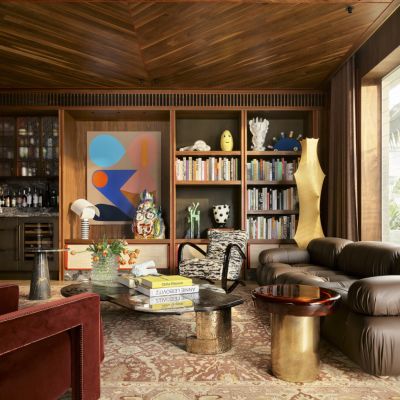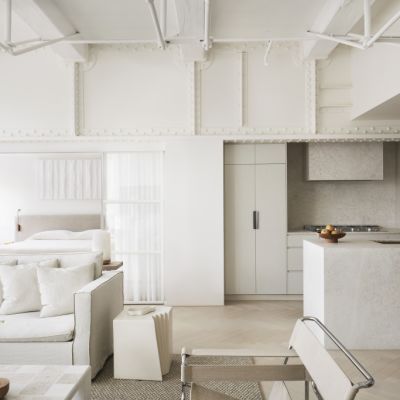A Hunter Valley country retreat that is home among the grapevines
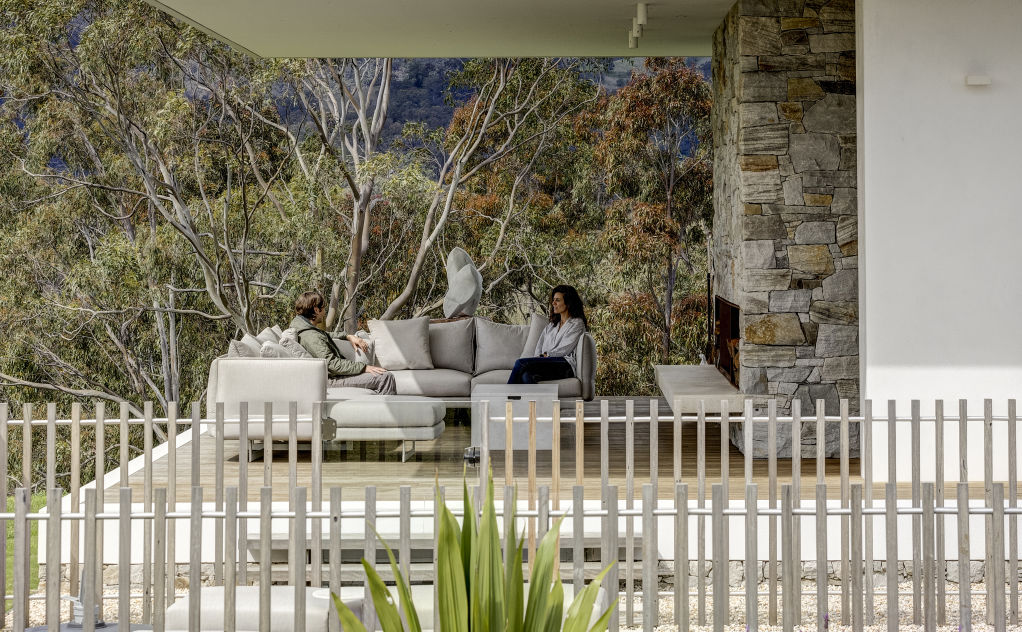
A trifecta of interconnected pavilions, Pokolbin House balances the demands of a working estate in one of Australia’s most established wine regions with the refined ease of a country retreat for a Sydney family.
A nod to the principles of mid-century modernism, particularly Mies van der Rohe’s Farnsworth House and its connection to the landscape, this project delivers a cohesive and formidable outcome through subtle and elegant design expressions.
The experience of slowing down begins well before arrival at the house via the long driveway that descends into the property. “Connecting with the place at a slower pace heightens the experience of being here,” says Matthew Woodward, principal architect at his eponymous practice.
“This is a home away from home”, says interior designer Tammy Miconi of Lot 1 Design. “A place [for the client] to reconnect with nature, but also with themselves.” This is Miconi’s fourth project with her client over the past 15 years. “We’ve become friends, and I clearly understand who they are, and how they love to live.”
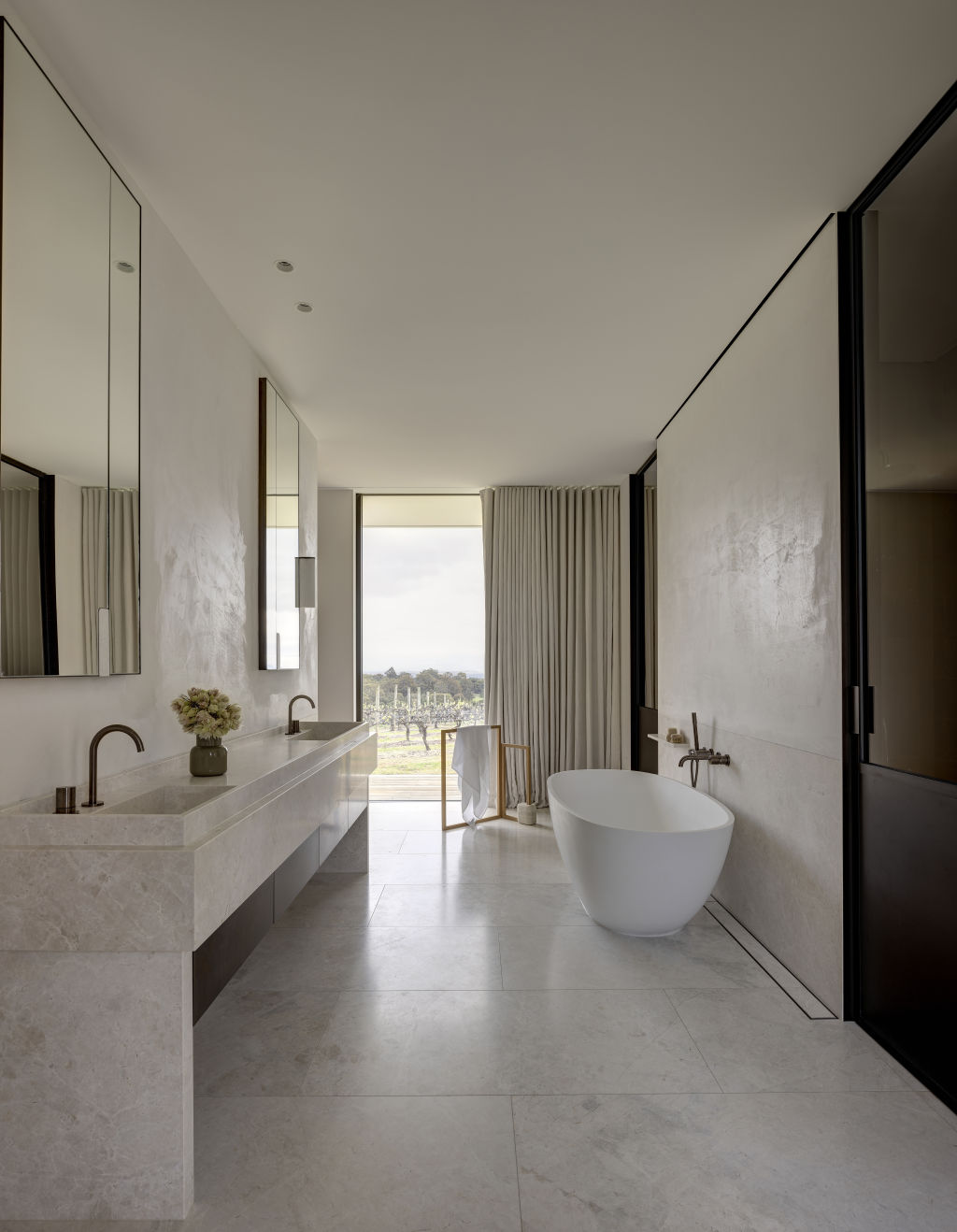
After securing the country property for their new holiday home, the clients turned to Miconi for her architect recommendation. “Having seen Matthew’s Wirra Willa Pavilion, which I loved and felt had the right foundational design elements the clients were seeking, they engaged Matt and his team to collaborate on the project.”
“I knew the Hunter Valley and Pokolbin area quite well following my time studying at Newcastle University,” says Woodward. “I think this enabled an ease in conversation with the clients and an immediate connection.”
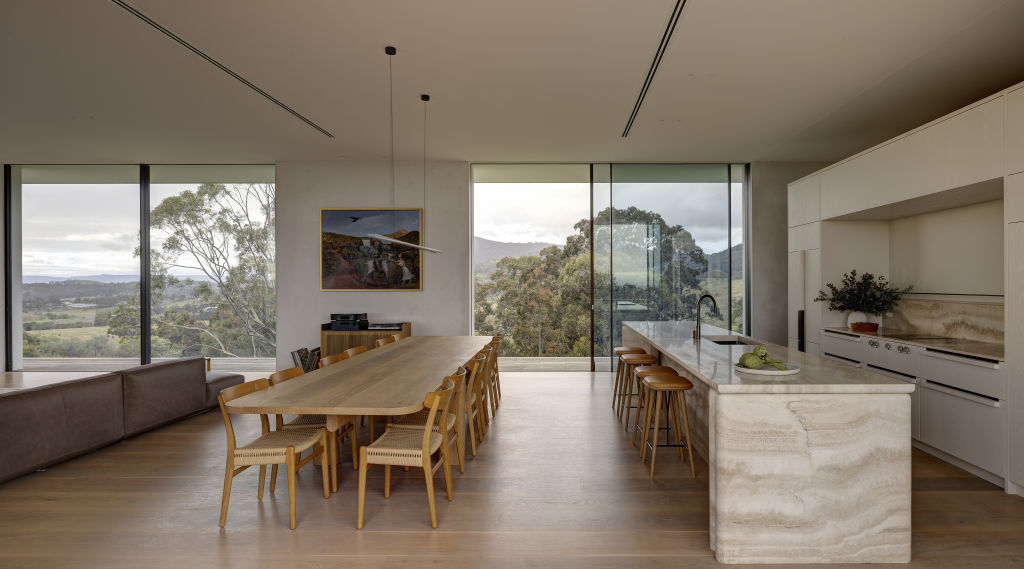
The brief called for a retreat to escape to and find respite within the rolling hills of the Pokolbin viticultural landscape. A home that was responsive to the location and climate, blurring the delineation between inside and outside living. “A home that was subservient within the dynamic, ever-changing landscape,” he explains.
The site contained relics from early 20th-century wine making and a ruin of the original homestead, built in 1865 that once belonged to founding winemakers in the region. “These relics, the viticultural context, Mediterranean influence and the natural Australian bush backdrop were a big source of inspiration,” Woodward says.
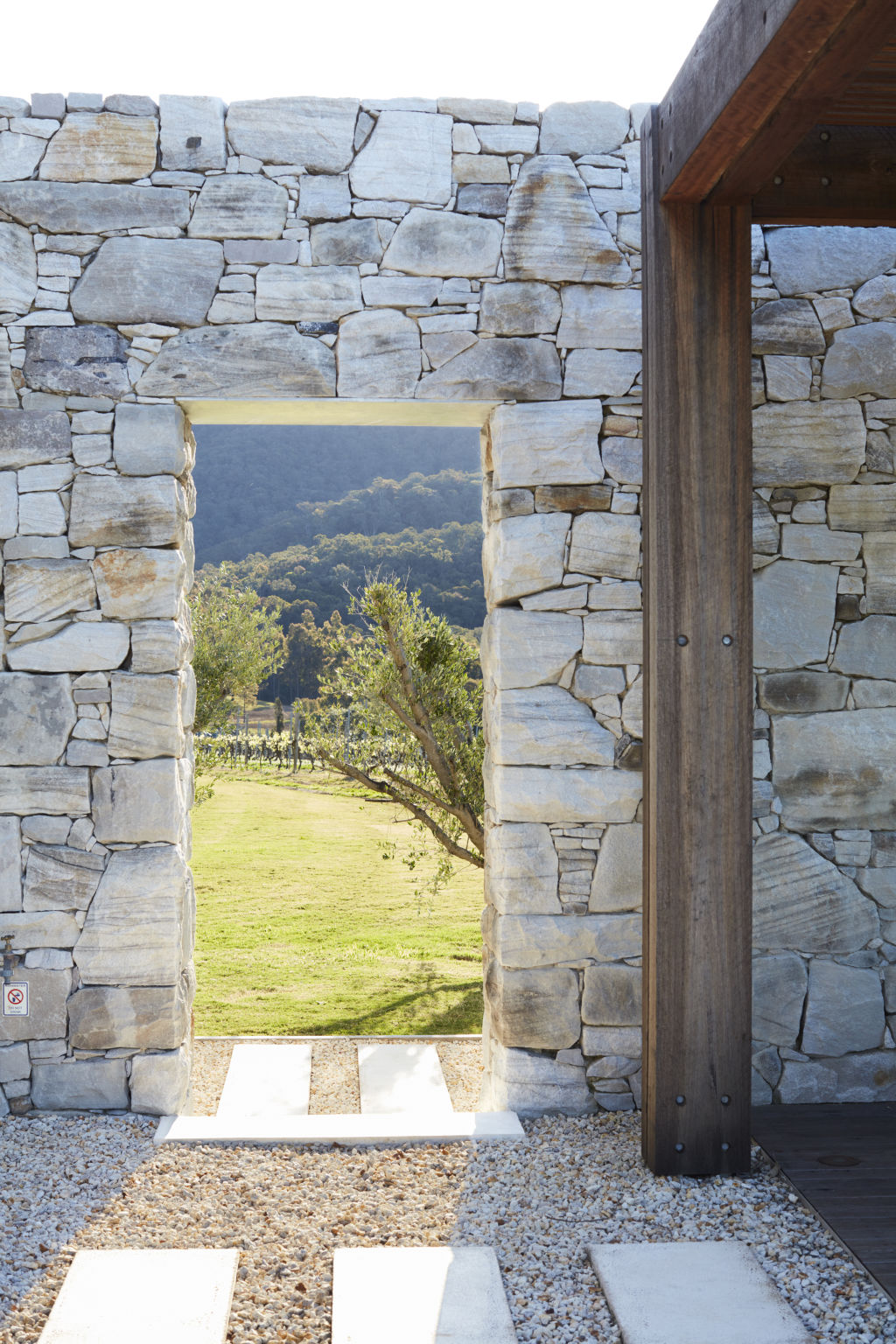
“Regarding the interiors, the brief was to keep the spaces light and natural, using texture and intricate detailing to enhance the experience,” explains Miconi. “We wanted to maintain a connection to the surrounding vistas towards Barrington Tops, Broken Back Range, Pokolbin Mountain and Port Stephens.”
External finishes are robust and able to withstand the extremes of the harsh elements, with some continuing inside, like the white sand render. Inspired by how the pavilions sit within the landscape as a strong presence yet connect with the surroundings, every aspect of the interior carries the similar concept of solid forms balanced with delicately detailed connections.
The most notable example is the kitchen island bench, with tops and slab ends crafted from an Italian travertine block with curves that soften the edges. The individual stone elements appear connected without taking away from each other, while delivering a powerful form together.
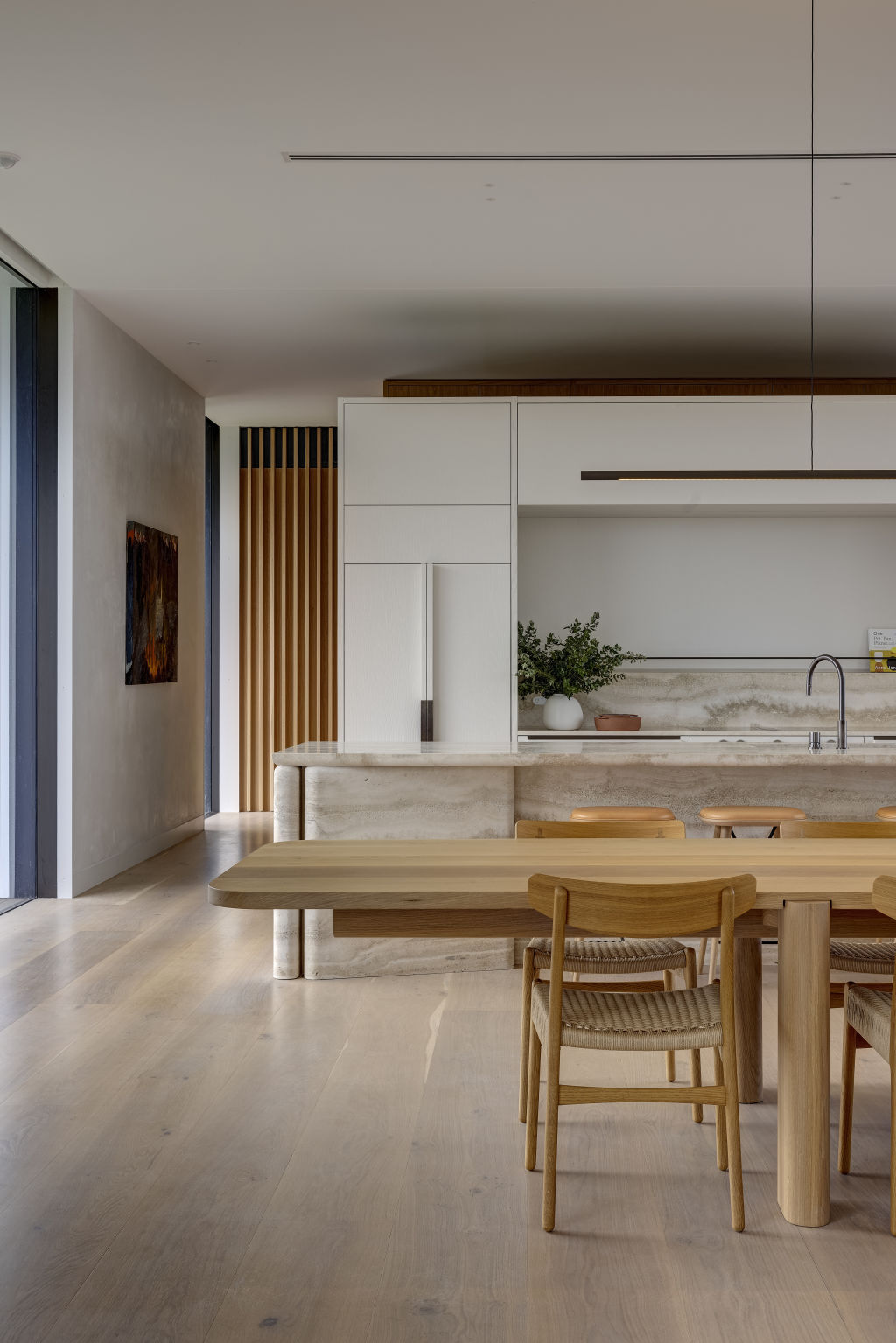
“There is just so much that goes into a well-resolved interior,” says Miconi. “The material selections, the way they connect with one another – not just aesthetically, but functionally.” In this vein, furniture selections feature a mix of design classics, local products and bespoke pieces, with the overall intent focused on comfort, timelessness and longevity. “The idea is that these pieces will age beautifully and, for the most part, never be replaced,” she says.
When asked what he’s most proud of, Woodward says: “It’s the way the house sits harmoniously within the surrounding landscape and acts as a platform to experience its ever-changing beauty.” He credits the entire team, including the builders from PCM Projects and structural engineers from SDA Structures, for making the outcome successful and cohesive.
“Never has a project felt more complete at handover with everything fitting perfectly together,” he says. “I love that there is a feeling of understated elegance about the place while being perfectly functional.”
For Miconi, her clients’ genuine love for architecture and design is one of her favourite aspects. “They see the value added when spaces encompass a true extension of who they are and how living and sharing these spaces with their loved ones enhance wellbeing and connection,” she says. “As designers, this is why we do what we do, and to work with clients that share this ideology adds so much pleasure to the project.”
We recommend
States
Capital Cities
Capital Cities - Rentals
Popular Areas
Allhomes
More
